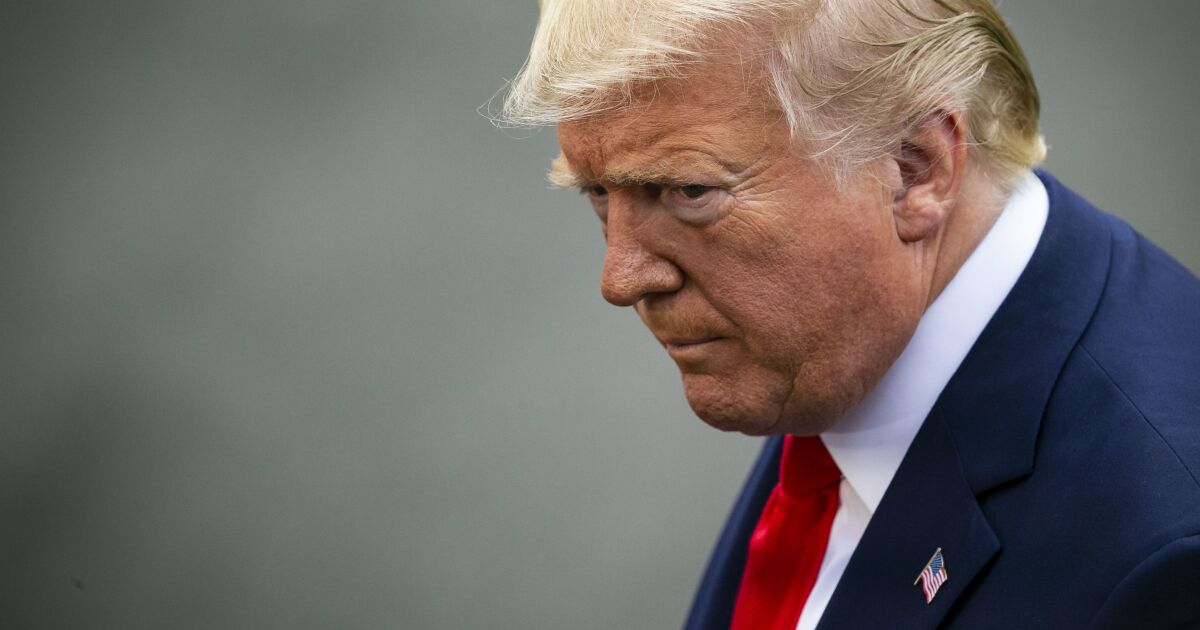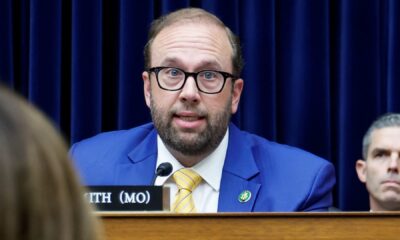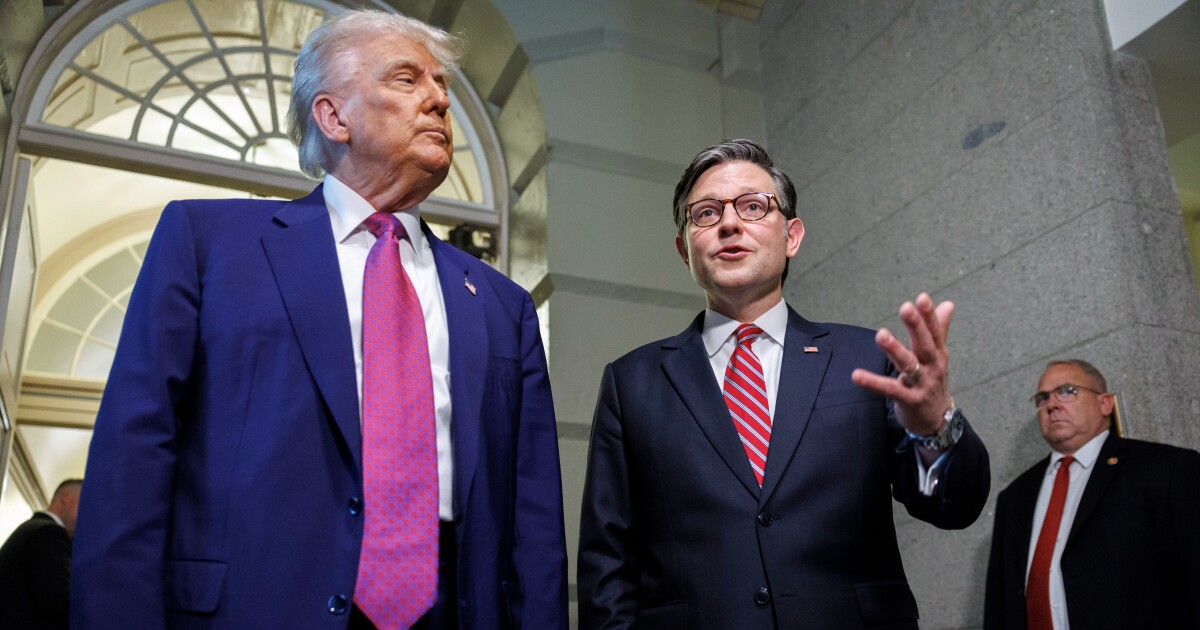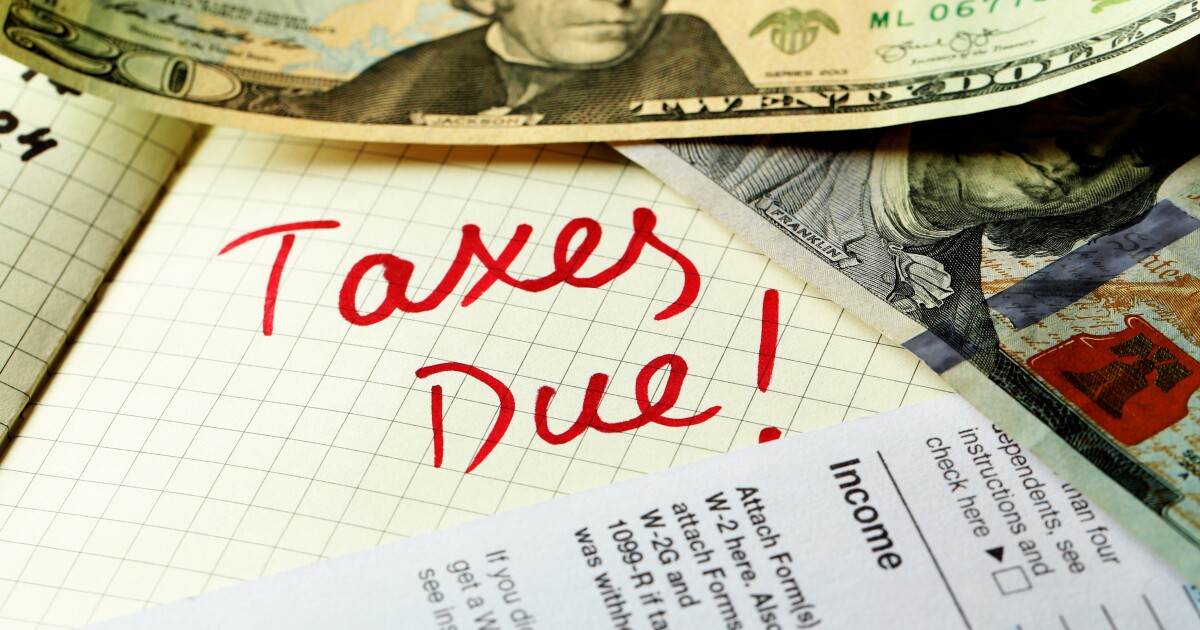President Donald Trump is embarking on what may be his most disruptive action yet for the global economy by broadening his grievances to how other countries choose to tax and regulate.
Trump on Thursday ordered top economic officials to calculate new U.S. tariffs based on the total tariffs and tax, regulatory, currency and any other barriers that U.S. exports face. The new “reciprocal” duties would be calculated country by country. They will be laid out in a series of reports due by April 1 that officials said would first examine the economies with which the U.S. has the largest trade deficits.
“The numbers are going to be very fair but staggering. They’re going to be large,” Trump told reporters in the Oval Office as he signed a memorandum ordering up the new tariffs.
The move, which Trump said would replace his campaign plan for a universal tariff on imports, immediately puts the European Union and countries including China, India, Mexico and Vietnam in the potential firing line, based on U.S. trade data.
European Commission President Ursula von der Leyen on Friday called Trump’s plan a “step in the wrong direction” and an act of self-harm. By raising tariffs, the U.S. “is taxing its own citizens, raising costs for business, stifling growth and fueling inflation,” she said.
Reaction was swift from other major U.S. trading partners. During a joint conference with Indian Prime Minister Narendra Modi on Thursday, Trump said the two countries would start trade negotiations. Indian officials Friday said they’re looking to boost oil and gas imports from the U.S. — a vow that countries from Japan to Vietnam have already made.
Asian exporters
In Tokyo on Friday, Japan also said it’s reaching out to Washington to start discussions. Taiwanese President Lai Ching-te pledged to boost military spending in a sign of further cooperation with the US against China. South Korea— which along with Japan was singled out by a White House official on a call with reporters — released a statement highlighting the low effective tariff rate on U.S. goods.
Trump’s plan would, if implemented, mark a departure from how the U.S. has approached tariffs for almost a century and deal a major blow to global trading rules now based on countries granting each other what are known as “most favored nation” tariffs unless they sign special trade deals. It would also turn the definition on its head — reciprocity has up until now referred to lower tariffs on goods.
“Trump is essentially trying to create a justification to impose high tariffs on whoever he wants,” said Sam Lowe, a partner at Flint Global in London, where he heads their trade and market access practice.
Fundamental change, Trump advisers said, is what’s needed. “The idea here is historic and it’s really about a revolution in how the international trading system is organized,” Peter Navarro, a senior trade adviser, told Bloomberg Television.
With his order Trump is also reaching beyond the usual boundaries of his trade fights to how countries collect taxes, apply regulations and standards, and other so-called non-tariff barriers.
Trump singled out the use of value-added taxes, which he and his advisors argue give exporters from other countries an unfair advantage over U.S. ones. More than 160 countries in the world use VAT or similar consumption levies, according to the International Monetary Fund. The U.S., however, bases its national taxes on income.
In the EU and other economies that use them, Trump and his advisors argue, the ability to claim a VAT rebate when products are exported gives European companies an unfair advantage as imports from the U.S. are charged VAT of 15-20% or higher depending on the member country.
“A VAT tax is a tariff,” Trump told reporters Thursday.
Many economists disagree. “Defining a VAT to be a trade barrier isn’t just questionable economics (the VAT is the same on imports and domestic production), it also basically forecloses negotiation, as the EU and others aren’t in a fiscal position to negotiate away its tax base,” Brad Setser, a senior fellow at the Council on Foreign Relations and a former US Treasury official, wrote on X.
In a note to clients, Paul Ashworth, chief North America economist at Capital Economics, said Trump’s plan was likely to have a more damaging impact on the U.S. economy than his previous universal tariff idea.
Just adding the average most-favored nation tariff rate of countries to their VATs would lead to significant reciprocal U.S. tariffs on some of the U.S.’s top trading partners, he wrote. If the U.S. imposes reciprocal tariffs that add VAT rates and MFN tariff rates together, the countries most hit would be India with a rate of 29%, Brazil and the EU.
Such duties alone, Ashworth wrote, would lead to an increase in the average effective tariffs rate on all U.S. imports from 3% currently to around 20%. It would also lead to a temporary rebound in U.S. inflation to around 4% later this year.
The EU stipulates that countries must apply a VAT rate of no less than 15% on most goods and services, though it leaves decisions on actual levels and exemptions to member states. According to ING calculations, the VAT across the 27-nation bloc averaged 21.5% in 2023.
By targeting VAT the U.S. is relaunching a long-running trade fight.
The U.S. and Europe have battled over the treatment of VAT and income taxes in global trading rules since the 1960s with the EU challenging multiple mechanisms the U.S. set up in the 1970s and ’80s to offer a similar export rebate on U.S. corporate taxes levied against revenues. The EU eventually won a World Trade Organization challenge to those mechanisms in the 1990s and since then the U.S. has had no similar export rebates.
Erica York, vice president of federal tax policy at the nonpartisan Tax Foundation, said the Trump administration’s view of VAT reflects a fundamental misunderstanding of how the tax works. VATs don’t discriminate against foreign goods since domestically produced ones face the same taxes in the countries they are sold, she said.
Consumption taxes
“The goal of a value-added tax is to tax domestic consumption,” York said. “There’s no discrimination based on where something was made. It’s just a tax on the stuff that people in a country are buying.”
But Trump’s grievances with other countries go beyond that by targeting regulations and other non-tariff barriers that U.S. goods face overseas.
“We’re going to look at everything,” Jamieson Greer, who is due to become U.S. Trade Representative, told reporters on Thursday, including what he called “fake” anti-trust regimes.
The EU has for years targeted U.S. tech giants like Apple Inc. and Alphabet Inc.’s Google for scrutiny in competition investigations that have led to hefty fines. The U.S. has also long complained about how the EU and other countries like Japan regulate food imports such as beef and chicken, as well as other U.S. exports like chemicals and genetically modified crop seeds.
In the memorandum signed Thursday, Trump ordered officials to include in their tariff calculations “any other practice that” they conclude “imposes any unfair limitation on market access or any structural impediment to fair competition with the market economy of the United States.”
As with many of Trump’s trade actions, optimists believe that they could lead to trade agreements that will avoid the disruptive economic impact of tariffs likely to provoke retaliation by other countries and lead to higher prices and slower growth.
John Veroneau, a partner at law firm Covington & Burling LLP who served as a senior trade official in the administration of President George W. Bush, said Trump’s latest move represents a significant broadening out of his trade conflicts.
“He has raised the stakes. This is now a global enterprise,” Veroneau said, calling it a “huge step” away from the global trading rules first laid out in the 1947 General Agreement on Tariffs and Trade.
‘New phase’
The U.S. is signaling “the start of a new phase in global trade” in which the U.S. uses its power not to influence global rules but the bilateral trade in goods, he said. The best hope, Veroneau said, is that the U.S. can negotiate new deals that don’t lead to escalating trade wars over tariffs.
Equities rose in Asia and Europe on Friday, with traders optimistic that the timeline for reciprocal tariffs provided enough room to negotiate. Setser said that shouldn’t last long as investors “will eventually realize that this is a path to real tariff hikes,” he wrote on X.
Jennifer Hillman, who served as both a senior U.S. trade official and a member of the WTO’s highest court, said the plan laid out by Trump and his advisors would be immensely complex to implement, would likely to lead to chaos and require more funding for border authorities
Interfering in how other countries collect taxes and impose regulations would also inevitably lead to a backlash against the U.S., said Hillman, now a senior fellow at the Council of Foreign Relations.
“We’re just going to make America hated again,” she said. “At some level, for these other countries, it’s just like ‘who are you to tell us that we can’t regulate our own economy?'”


 Economics1 week ago
Economics1 week ago
 Economics1 week ago
Economics1 week ago
 Personal Finance1 week ago
Personal Finance1 week ago
 Economics1 week ago
Economics1 week ago
 Economics6 days ago
Economics6 days ago
 Personal Finance1 week ago
Personal Finance1 week ago
 Economics1 week ago
Economics1 week ago
 Personal Finance1 week ago
Personal Finance1 week ago












